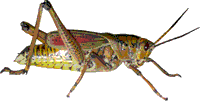Entomology Collections, Miscellaneous
Date of this Version
1998
Abstract
Worker yellowjackets (Hymenoptera: Vespidae) were captured in traps baited with combinations of an aqueous solution of acetic acid and polyethylene caps loaded with either butyl butyrate, heptyl butyrate, or isobutanol. Vespula germanica (F.) were captured in large numbers in traps baited with acetic acid and isobutanol or acetic acid and butyl butyrate. Vespula pensylvanica (Saussure) were captured in large numbers in traps baited with heptyl butyrate, acetic acid and heptyl butyrate, acetic acid and butyl butyrate, and acetic acid and isobutanol. Acetic acid generally enhanced the attractiveness of these other compounds to V. pensylvanica and V germanica. Vespula atropilosa (Sladen) were captured in large numbers in traps baited with heptyl butyrate or acetic acid and heptyl butyrate, with no apparent effect of the addition of acetic acid to the trap, and they were only weakly attracted to other baits. The importance of acetic acid to attraction of V. germanica and V. pensylvanica to these lures supports the hypothesis that this response is food-finding behavior. The chemical lure comprised of acetic acid and isobutanol can be used for trapping the worldwide pest V. germanica, with the added advantage of simultaneous attractiveness to V. pensylvanica.


Comments
Published in Environ. Entomol. 27(5): 1229-1234 (1998).